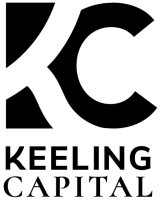Geopolitical realignments are reshaping global capital flows, with US investors increasingly seeking opportunities abroad and Asian capital facing growing constraints in the US. In this context, UK real estate is gaining renewed attention as a credible standalone investment and a prudent diversification strategy amid EU uncertainty.
Whilst public equities remain crucial to any investment portfolio, alternative investments are increasingly relevant, with family offices as an investor type able to access and influence alternative opportunities directly and indirectly. What is clear is that to achieve returns investors need to embrace volatility and some level of active management, regardless of how opportunities are accessed.
With a number of alternative asset classes having their own challenges in terms of returns and liquidity, secondaries and co-investment remain popular, not to mention continuation vehicles, which can provide a solution to limited liquidity for fund managers, but not without scepticism from some parts of the investor community.
Real estate, long valued for its diversification and wealth preservation qualities, has re-emerged post-correction as a compelling source of both income and alpha. While many family offices are familiar with the asset class, cross-border execution demands specialist expertise which was often previously underestimated.
The UK, increasingly considered to be undervalued, offers a clear opportunity. However, this conviction will only be sustained if the UK government commits to growth. Some initial policy introductions have not landed well and the ensuing uptick in business owners leaving the UK has no doubt come as a surprise. A partial reversal of sorts makes sense, paving the way for more business-friendly policies and regulatory tailwinds in the coming years.
While certainty will only come through deal activity, conviction is building that the UK real estate market has bottomed out and there is value to be achieved by new equity across the risk-reward spectrum and most sectors.
The gap between resilient occupier fundamentals and subdued investor sentiment is narrowing. Private wealth often leads the recovery, entering before institutions return at scale once the value proposition is obvious. The most attractive entry point is usually in this window before the “snapback.”
The UK fundamentals remain compelling. Investors appear to continue to value the UK’s transparent legal system, landlord-friendly environment, liquid investment market and global tenant base. This is further supported by the downward trajectory of interest rates, which combined with the current yield levels, is making debt accretive across the risk reward spectrum.
It’s important to note that in today’s market, returns will not be generated by opportunistic bargain hunting, but by disciplined asset selection and proactive management.
Passive ownership may have worked in the era of cheap debt and yield compression, but today’s environment requires active asset management: securing the right tenant on the right terms, future-proofing assets with long-term sustainability key, and minimising risks from unforeseen market turns. In other words, picking the right assets and operational expertise have returned to the centre of real estate value creation.
Whether investors seek to invest in real estate directly will come down to preferences and know-how. Some prefer direct ownership, which offers control but demands local presence, resources and immediate deployable capital. Others favour indirect exposure through managers, whether via clubs, funds or segregated accounts. Successful mid-market firms will be those that deliberately cater for all of these based on deep experience working with private capital.
A fund offers diversification and speed, with pre-committed capital that supports winning and delivering projects. Deal-by-deal preserves selection, pacing and exit control, with clearer line of sight on underwriting. Many investors blend the two: a diversified fund for consistency, alongside selective co-investment for control.
Working with a specialist manager brings access to better deals, a trusted network, and credibility with counterparties who know the manager can deliver. Seller confidence increasingly depends on a buyer’s credibility and readiness to transact.
Family offices and private wealth investors are well positioned for the opportunity today and to helping drive the recovery. They have investable capital, agility and a growing appetite for real estate, both as an alpha source (e.g. value-add and developments) and as an alternative to fixed income (e.g. core and core+ strategies).
Institutional capital is still largely in “wait-and-see” mode, keeping transaction volumes below historical averages. But this window will not stay open indefinitely. As interest rates ease further and confidence builds, institutional buyers will return, competition will intensify, and today’s pricing advantages will diminish.
The most attractive vintages are shaped in times of dislocation and the UK’s attractive fundamentals and a dislocation between investment and occupier markets currently present a clear signal to investors with conviction that it’s time to lean in.












